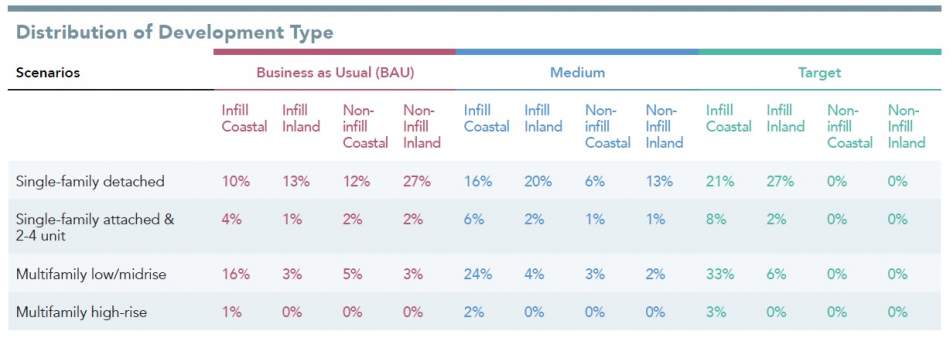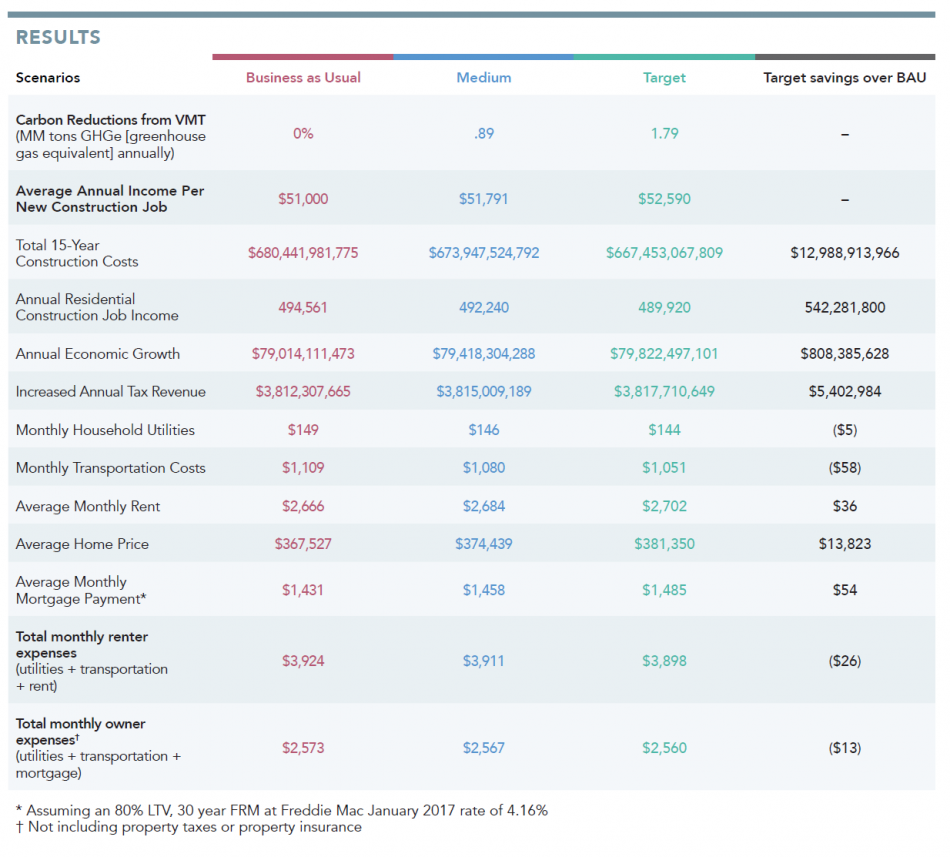How can California keep pace with housing demand while staying on track to fulfill its ambitious agenda to combat climate change? A report commissioned by the nonprofit organization Next 10 looks to answer this question by exploring the impacts of housing development on the economic growth and greenhouse gas emissions over the next 13 years.
The report, titled "Right Type, Right Place," was conducted by researchers from UC Berkeley. With the assumption that the state will produce slightly over 1.9 million new housing units between 2015 and 2030, the study examines three different scenarios for housing growth and their effects on issues such as transportation costs, vehicle miles traveled and housing prices.
- "Business-as-usual" is established as a baseline for the study, and assumes that future develompent patterns follow those seen between the years 2000 and 2015.
- The "medium" infill scenario assumes that more develoment occurs within already-developed areas.
- The infill "target" scenario assumes that all new development occurs within infill areas of the state.
Each of these scenarios considers four different housing types:
- Single family detached
- Single-family attached and 2-4 unit buildings
- Multifamily low-rise/mid-rise
- Multifamily high-rise.
The baseline scenario assumes that future development patterns will proceed much as they have in California's past. Residential growth occurs on the perimeters of urban areas, and is dominated by single-family residences. This contrasts with the medium and infill target scenarios, in which most development consists of larger multi-family structures in already built-out areas.
The results of the study are neatly summarized here:
Notable findings from the study include:
- The target scenario reduces greenhouse gas reductions by 1.79 million metic tons annually compared to the baseline scenario, with the potential for greater reductions due to new commercial development in infill areas that is not accounted for by the study.
- Economic impacts are consistent across the three scenarios, meaning that the environmental gains could be achieved at a relatively low cost. In fact, the target scenario resulted in higher economic growth (a $800 million annual increase), higher tax revenue ($5.4 million more per year) and lower construction costs ($13 billion annually) compared to the baseline.
- The target scenario results in slightly fewer construction jobs due to the reduced costs, but this is offset by higher-wage positions that result in a $542 million increase in annual residential construction job income.
- Increased infill development in desirable coastal cities would lead to an increase in average home prices and rents, as construction costs and land values are higher in places such as Los Angeles, San Francisco and San Diego. However, this is offset by reductions in household energy use and transportation costs due to tighter infill development.
The report makes several policy recommendations to achieve the target scenario, or at least the medium scenario.
At the local level, recommendations include:
- Changing zoning laws to allow more multifamily use, reduced parking requirements and reduced permitting times.
- Preserving affordable housing, offering tenant protection, guarantee of lease renewal and other anti-displacement policies.
- Increased funding for rail and bus rapid transit in infill areas, as well as enhanced bike and pedestrian infrastructure.
- Establishing urban growth boundaries to prevent sprawl.
At the state level, recommendations include:
- Reforming state law and implementing new programs to permit more infill development.
- Increasing funding for affordable housing.
- Improving transportation and transit investments through strategies such as transportation pricing.
- Reforming CEQA to provide streamlined processing.
The full report can be found here:
- Right Housing (Next 10)








